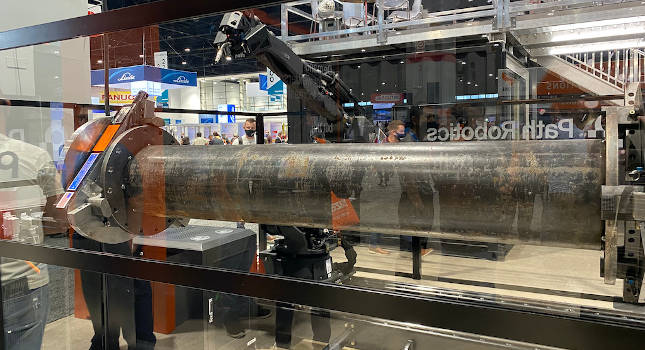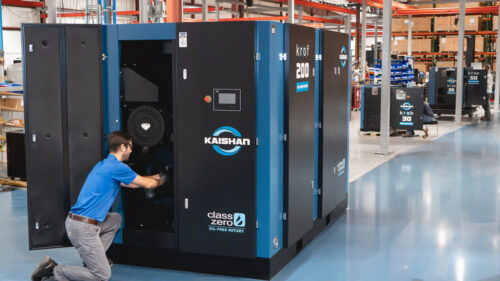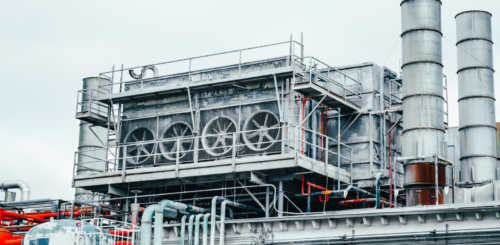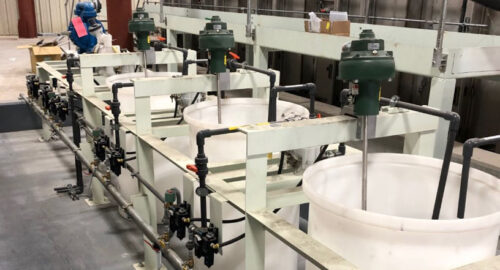Compressed air in the pulp, paper and board industry
The trend is turning from traditional paper to more sophisticated products such as demanding packaging solutions and specialty papers and compressed air will play a role.
The global consumption of paper and paperboard has reached over 420 million tons per year, with China and the USA consuming almost half of all paper-based products manufactured worldwide. The trend is turning from traditional paper to more sophisticated products such as demanding packaging solutions and specialty papers. To keep up with the demand, pulp and paper mills require a continuous flow of oil-free compressed air to supply the near-constant production rate.
Paper and board products are used across almost all industries for packaging, labels, etc. Manufacturers need to maintain the highest standards to ensure consumer safety. This sets strict quality requirements for compressed air systems as well. This article explains how compressed air is used in the pulp, paper and board industry and how oil-free air compressors help the mills to comply with safety guidelines and to create more efficient production practices.
Compressed air applications and requirements
Compressed air is used throughout the entire process, all the way from separating and cleaning the raw pulp fiber to the final product. Oil-free compressed air is a mandatory utility in every step as process and instrument air. Different standards and regulations are set to guarantee safe and clean products.
The International Organization for Standardization recently released guidelines for air purity in the manufacturing sector. The ISO 8573-1 (2010) ruling states that air compressors marketed as oil-free and used for manufacturing must have no oil emissions to receive a class zero status.
In the United States, the Environmental Protection Agency (EPA) regulates pollutants in the pulp and paper industry. This ensures that paper products do not contain oil or other contaminants that could harm people or the environment.
Because many paper products are used in packaging for food, beverages, and pharmaceuticals, the U.S. Food & Drug Administration (FDA) also plays an important role in quality control. According to the Code of Federal Regulations (CFR) Title 21 , packaging may not contain any substances deemed harmful for human consumption, including oil used for powering and lubricating air compressor parts.
Oil-free compressor technology
It is important to note that dry rotary screw air compressors generally used in the pulp, paper and board industry and marketed as oil free in fact do require oil for lubrication. This oil can work its way into the air stream. Contrary to traditional “oil-free” technologies, the HSR high-speed turbocompressor is genuinely 100% oil-free.
The HSR turbocompressors use active magnetic bearing (AMB) technology that levitates the motor shaft magnetically. The gearless drive unit of the HSR uses titanium turbo impellers that do not touch and will not wear due to friction. This eliminates the need for maintenance. There are no gears or bearings to lubricate, no mechanical seals or any other parts that touch or wear and thus no oil and no oil filters.
The variable speed driven (VSD) turbocompressors are designed to keep the network pressure stabilized within tight parameters in the designated variable speed range.
Efficient manufacturing with cost-effective compressed air
Compressed air accounts for up to 10% of all energy consumption in the manufacturing industry. For an industry such as pulp, paper and board manufacturing that requires 24/7 continuous operation, air pressure control is critical for efficiency and cost-effectiveness. Reliability is another must. Interruptions in the production because of maintenance or breakdowns are expensive, so the mills need air compressors that deliver clean compressed air reliably.
Eco-friendly manufacturing
While the pulp, paper and board industry has made significant progress towards more eco-friendly practices by utilizing recycled products and minimizing emissions, energy consumption is still a major contributor to the overall carbon footprint.
Do you have experience and expertise with the topics mentioned in this content? You should consider contributing to our CFE Media editorial team and getting the recognition you and your company deserve. Click here to start this process.






